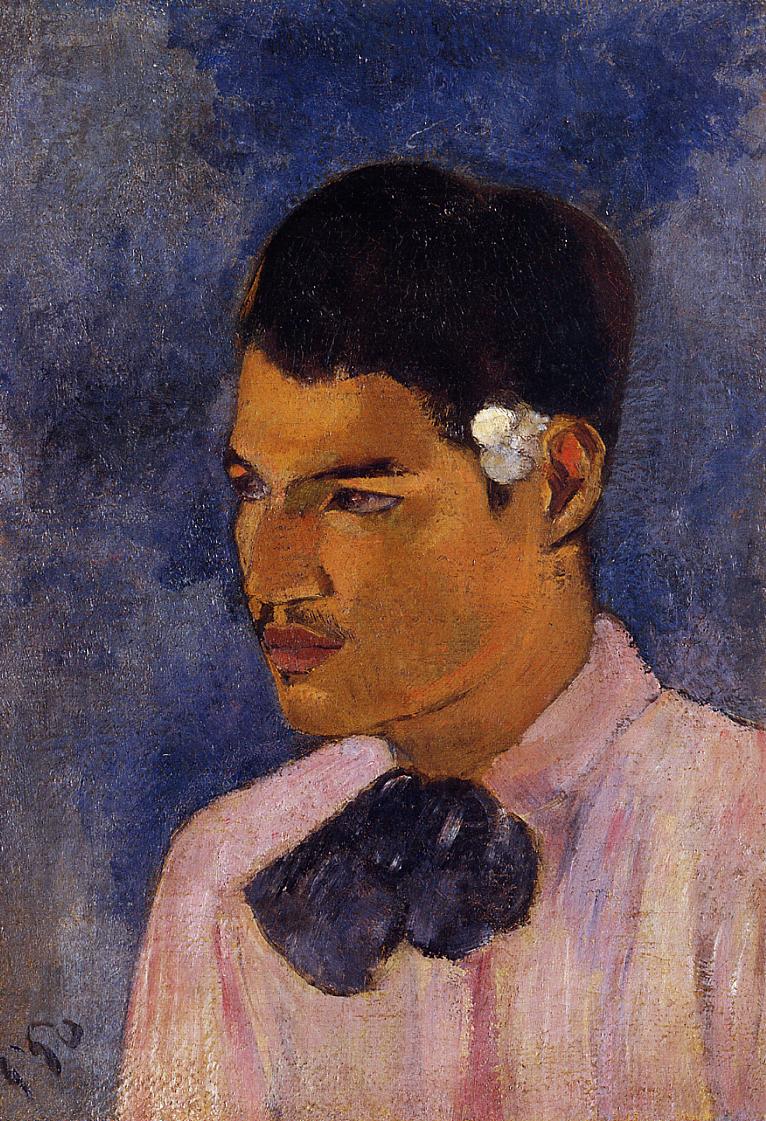art-Gauguin.com
Paul Gauguin 1848-1903
Paul Gauguin - Young Man with a Flower Behind his Ear 1891
 Young Man with a Flower Behind his Ear |
From Christie's:
Originally in the collection of the great modern master Henri Matisse, Paul Gauguin's striking and evocative portrait of a young man, clad in a pink European blouse and loose cravat, with the native adornment of a small white tiaré blossom tucked over his left ear, is among the first paintings the artist completed after arriving in Tahiti in 1891.
The forthright charm of this painting stems from Gauguin's sensitive characterization of his sitter, a handsome and thoughtful man of whom the artist was clearly quite fond. The sincere, underlying simplicity of this three-quarter view, bust-length portrait, moreover betokens a significant story–indeed, a profoundly transformative event–in the life and career of the great artist, in which this young Tahitian served as a catalyst and an invaluable teacher. The young man with whom Gauguin became acquainted during his initial months in Tahiti was named Jotefa–or so the artist called him in a later draft of Noa Noa (“Fragrance”), the account he began in 1893 of his first island sojourn. It was this young boy who led Gauguin through the exotic landscape of the island in search of wood for the artist’s sculpture. As a result of their contact and this seminal journey, Gauguin met with that breakthrough revelation he had been seeking of completely immersing himself in an indigenous culture and becoming a Maori. Painted in the midst of this deeply transformative Tahitian period, Jeune homme à la fleur could be seen to pay tribute to this young man, encapsulating the compelling personal and artistic adventure that Gauguin undertook in the South Seas. The importance of Jeune homme à la fleur within Gauguin’s oeuvre is reflected not only by its unique provenance–after Matisse, it was later owned by Lillie P. Bliss, one of the original founders of the Museum of Modern Art, New York–but the painting has also been included in some of the most prominent exhibitions of the artist in the twentieth century.